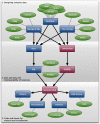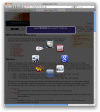The 3rd DBCLS BioHackathon: improving life science data integration with Semantic Web technologies
- PMID: 23398680
- PMCID: PMC3598643
- DOI: 10.1186/2041-1480-4-6
The 3rd DBCLS BioHackathon: improving life science data integration with Semantic Web technologies
Abstract
Background: BioHackathon 2010 was the third in a series of meetings hosted by the Database Center for Life Sciences (DBCLS) in Tokyo, Japan. The overall goal of the BioHackathon series is to improve the quality and accessibility of life science research data on the Web by bringing together representatives from public databases, analytical tool providers, and cyber-infrastructure researchers to jointly tackle important challenges in the area of in silico biological research.
Results: The theme of BioHackathon 2010 was the 'Semantic Web', and all attendees gathered with the shared goal of producing Semantic Web data from their respective resources, and/or consuming or interacting those data using their tools and interfaces. We discussed on topics including guidelines for designing semantic data and interoperability of resources. We consequently developed tools and clients for analysis and visualization.
Conclusion: We provide a meeting report from BioHackathon 2010, in which we describe the discussions, decisions, and breakthroughs made as we moved towards compliance with Semantic Web technologies - from source provider, through middleware, to the end-consumer.
Figures



References
-
- Clinical Observations Interoperability. http://www.w3.org/wiki/HCLS/ClinicalObservationsInteroperability.
LinkOut - more resources
Full Text Sources
Other Literature Sources

